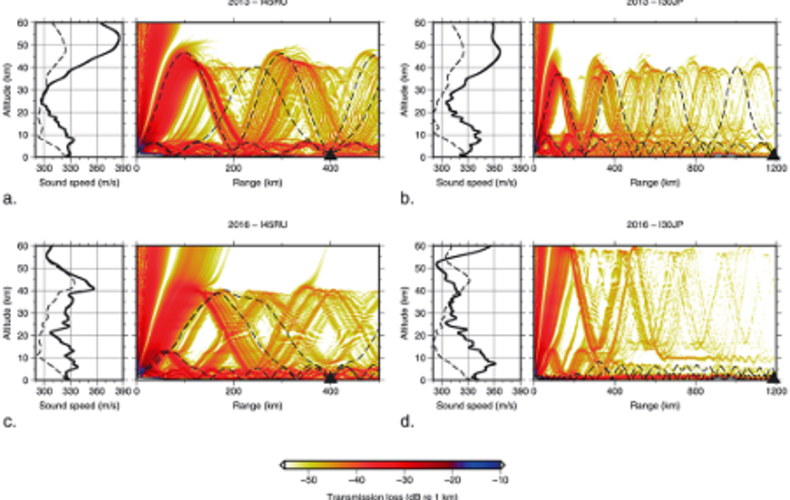
The underground nuclear tests by the Democratic People's Republic of Korea (DPRK) generated atmospheric infrasound both in 2013 and 2016. Clear detections were made in the Russian Federation (I45RU) and Japan (I30JP) in 2013 at stations from the International Monitoring System. Both tropospheric and stratospheric refractions arrived at the stations. In 2016, only a weak return was potentially observed at I45RU. Data analysis and propagation modeling show that the noise level at the stations and the stratospheric circumpolar vortex were different in 2016 compared to 2013. As the seismic magnitude of the 2013 and 2016 nuclear test explosions was comparable, we hypothesize that the 2016 test occurred at least 1.5 times deeper. In such a case, less seismic energy would couple through the lithosphere-atmosphere interface, leading to less observable infrasound. Since explosion depth is difficult to estimate from seismic data alone, this motivates a synergy between seismics and infrasonics.
JD Assink, G Averbuch, PSM Smets, LG Evers. On the infrasound detected from the 2013 and 2016 DPRK's underground nuclear tests
Status: published, Journal: Geophys. Res. Lett., Volume: 43, Year: 2016, First page: 3526, Last page: 3533, doi: 10.1002/2016GL068497